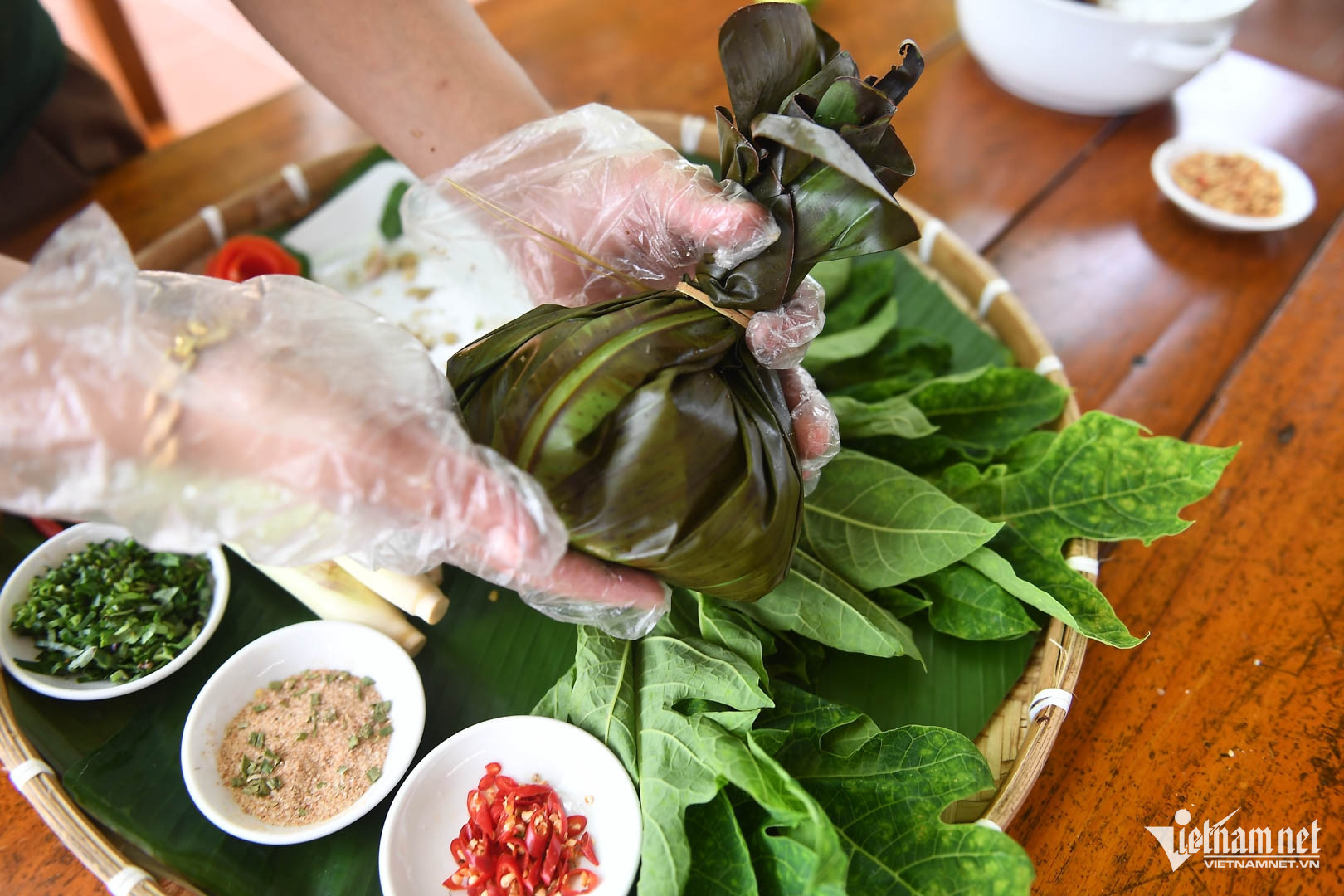Linh Trang
In Mai Chau, Hoa Binh, visitors often cannot resist the local specialties made from the "giant" fish of the Da River, such as mackerel, catfish, and carp.
One standout dish is the Da River carp steamed with bitter papaya leaves, a delicacy always present at festive meals and new rice celebrations of the Thai ethnic people. Today, this dish is served in restaurants and resorts to cater to visitors from afar.
Upon hearing about the dish, many guests are skeptical of its flavor due to the typically bitter taste of papaya leaves, which are mainly used for medicinal purposes. The appearance of the dish is also uninviting: fish wrapped in wilted leaves and roughly packaged.
Only when the server gently removes the leafy layers do diners see the thick fish pieces, white meat, and rising steam, accompanied by a distinctive, slightly pungent aroma that stimulates the senses.
According to Lo Huong Giang, a Thai ethnic resident and local chef in Xam Khoe commune, Mai Chau, the ingredients for this dish include carp (weighing over 3 kg, usually selecting the part near the head for fewer bones and a wider belly), moderately mature male papaya leaves, and various herbs and spices like dog basil, coriander, dill, scallions, lemongrass, ginger, makhwaen, chili, pepper, and shallots.
The Da River carp is cleaned and cut into thick pieces, about two-thirds of an adult's palm size. The chef seasons the fish and stuffs it with a mixture of ginger, lemongrass, chili, shallots, pepper, and young papaya leaves, allowing it to marinate for about two hours.
Mature male papaya leaves are used to wrap the fish pieces tightly, followed by a layer of banana leaves that have been heated to make them pliable, similar to wrapping a banh chung (Vietnamese square sticky rice cake).
"These layers prevent the fish's juices from leaking out during steaming, preserving its original flavor," says Giang. In some places, the chef chops the papaya leaves and wraps them around the fish before enclosing it in banana leaves.
The fish packets are steamed for 1.5 to 2 hours to ensure the fish is evenly cooked, the papaya leaves soften, and their essence infuses the fish. The dish is served hot, steaming as it is brought to the table.
At first bite, diners might taste a slight bitterness from the papaya leaves, but the fish meat is flavorful and sweet, with a unique aroma. After a few bites, the bitterness fades, and diners nod in appreciation. The spices from the Northwest, such as chili, pepper, and makhwaen, enhance the dish's appeal.
Mai Chau is known for many unique specialties, such as ant salad, grilled duck in bamboo tubes, snail cakes, gai cakes, and grilled chicken with makhwaen, which add to the charm of community-based tourism alongside traditional landscapes and cultural beliefs.
According to the Hoa Binh Department of Culture, Sports, and Tourism, the province welcomed 2.6 million visitors in the first six months of the year, nearly a 10% increase compared to the same period last year, achieving 61.9% of the annual plan. Among them, Hoa Binh city received 280,000 visitors, Mai Chau district welcomed 210,000 visitors, and Kim Boi district attracted 180,000 visitors.


 |
 |